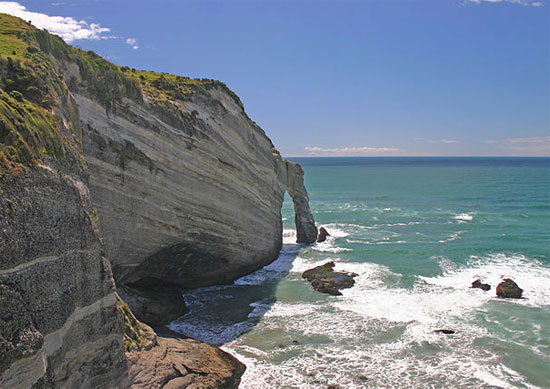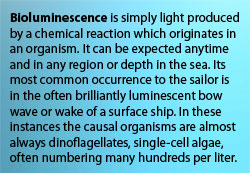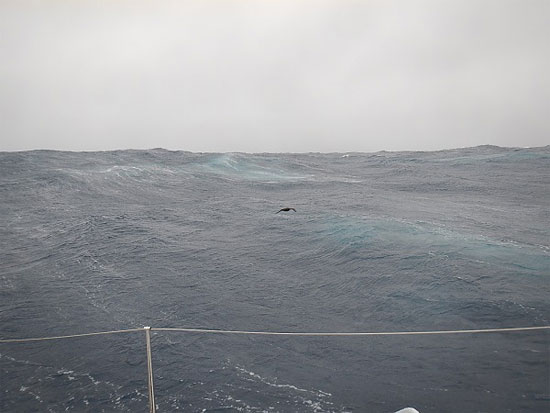 Bodacious Dream, Franklin and I arrived in Wellington, New Zealand and the end of Leg 2 of our Circumnavigation on Saturday, just as the day was drawing to a close. Earlier in the evening, with the sun setting, I had pointed Bo’s bow towards the first Wellington Harbor light. From that point – about 3 miles out, we slowly made our way into the large bay. Before too long we were met by Lapo Ancillotti and some other friends on a powerboat, who helped guide us past the reefs and into the marina. What a relief and joy it was to see such wonderful old friends, after so long alone. Lapo and his gang at BT Boats were the builders of Bodacious Dream, so the return to Wellington had special significance for everyone, including Bodacious Dream!
Bodacious Dream, Franklin and I arrived in Wellington, New Zealand and the end of Leg 2 of our Circumnavigation on Saturday, just as the day was drawing to a close. Earlier in the evening, with the sun setting, I had pointed Bo’s bow towards the first Wellington Harbor light. From that point – about 3 miles out, we slowly made our way into the large bay. Before too long we were met by Lapo Ancillotti and some other friends on a powerboat, who helped guide us past the reefs and into the marina. What a relief and joy it was to see such wonderful old friends, after so long alone. Lapo and his gang at BT Boats were the builders of Bodacious Dream, so the return to Wellington had special significance for everyone, including Bodacious Dream!

As my email has been mysteriously unavailable for the past 10 days, let me begin with some highlights of the past week.
It was on a wilting breeze, that we first caught sight of the southwestern coast of New Zealand’s South Island. Instead of the forecasted cold front that we had hoped would propel us up the coast and into the passage between the North and South Islands, we fell behind a low-pressure system that took the winds with it, leaving us struggling our way north along the incredibly beautiful coastline. As I explained in the last post, thanks to the generosity of the fisherman aboard “Ocean Odyssey,” (pictured here @ 43.433024S, 169.37806E ) I was able to acquire more fuel to assist us in our northward progress.
Here’s a video I shot not long after that encounter …
Along the Eastern Coast of New Zealand’s South Island
After a few days of traipsing along behind that low, we met up with a cyclone system coming down from the North Island. After that tossed us around for a while, we bumped into a high-pressure system pushing up from the eastern side of the South Island. Ultimately, we entered the famously windy Cook’s Strait, where 25-knots or so are considered to be a “rather appropriate amount” of wind. As it turned out, here and for most of the last 100 miles, we wrestled with 35-50-knot winds which we had to take right “on the nose” too – not exactly what I was hoping for after 50 days of sailing across the Southern Ocean!

Eastern Coast of New Zealand’s South Island – 43.42444S, 169.328302E
As I approached the northwest corner of South Island, known as Cape Farewell (or Farewell Spit, which we discussed in our last post) – we came upon more of the wondrous bioluminescence, but this time it was doing something different still. The glowing orbs, instead of floating on the surface as before, were now submerged a couple of feet below the surface, giving an eerie sense of depth to the water. The bioluminescence on the latter leg of the trip provided me some of the most amazing sights I’ve ever encountered.
With a hundred miles still to go, there was nothing left to do but “grunt” it out. That’s what the mates here in NZ say. “You just have to “grunt” it out mate!” So grunt it out we did. Hunkering down, Bo and I sailed those last hundred miles in just less than 24 hours. Fortunately, the first leg of about 60 miles we were able to sail without a tack. Through the last 40 miles, Cook’s Strait fully lived up to up to its windy reputation, which made for quite “sporting” conditions with plenty of pounding waves and wet spray everywhere. I took heart in knowing it was the last 40 miles of the voyage and not the first!
As I made the last tack, I began to congratulate everyone … Bo, Franklin and Otto and began to partake of the final cookie from my secret emergency stash, when suddenly – all hell broke loose! With the boat in the middle of the tack, alarms started to go off! I took a quick inventory – the engine was overheating, the autopilot display had suddenly stopped working just as the ferry from Wellington began passing us … though too close for my AIS alarm to announce it. Somehow in the next frantic 30 minutes, I was able to put everything to rest. I shut the engine down, organized the sail trim, reset the course, got the autopilot driving again, shut down the AIS alarm and turned the inside of the boat upside down looking for the spare parts kit for the engine. With Bo bouncing up and down in 30-knot winds and seas and just a couple of miles offshore of the point, I changed the “impeller” (a rotor part) on the engine, then got it restarted at which point all returned to semi-normal. After a moment or two to review what had just happened, I chided (and reminded) myself to never ever congratulate yourself in advance of actually completing the task.
At that point, I wasn’t so much using the engine for propulsion, but rather to charge the batteries so the autopilots and navigation could keep operating, but I kept it going as a precaution when tacking through the heavy wind and seas. I do this because every once in a while, with the autopilot making the tacking turn, the progress of the tack is interrupted by a brutally large wave, which can stall and throw the boat back, taking away the forward motion and the ability to steer the boat. With just a touch of engine engaged, I can usually prevent this from happening. When racing where you can’t use the engine, I would instead use a slightly different but much more demanding (and multidextrous) tacking procedure.
 Sometimes, time just stops and the world shows its soul. 43.4242114S, 169.33042E
Sometimes, time just stops and the world shows its soul. 43.4242114S, 169.33042E
So it was that within an hour, we were pointed towards the harbor in a darkening and misty fog that shrouded all landmarks, at which point the arrival of Lapo and friends was a terrific relief! Once tied up in Wellington Harbor, we quickly cleared though customs whereupon I was handed a cold Heineken beer. Now I could finally count my passage as accomplished! What a relief! Soon there would be a long and extra soapy shower and some grand and uninterrupted sleep!
At present in Wellington, it continues to be cold, rainy and typically windy, but it’s also time to take stock of the work list and to begin making arrangements for getting things done … so I guess I’m now “back to work.”
I’ll share more of the recent days of sailing here shortly now that I have email access. And stay tuned for videos and photos of this amazing leg!
Thanks again for all your support and words of encouragement. It meant an awful lot to all of us.
– Dave, Bodacious Dream, Franklin, Otto and Assorted Salt Monsters of the Southern Oceans
Some Key Links: Email List Sign-Up :: Explorer Guides :: BDX Facebook















































